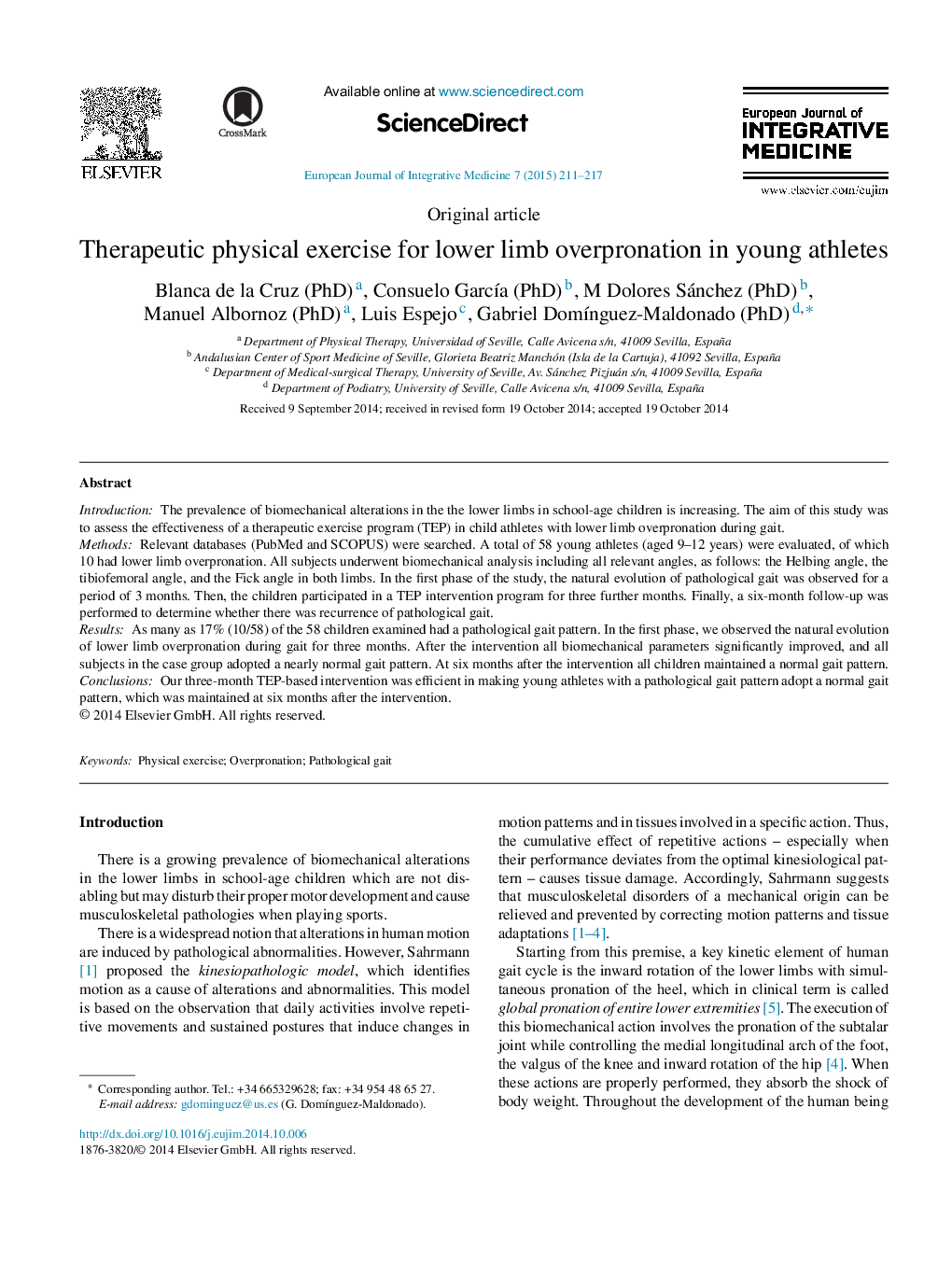| Article ID | Journal | Published Year | Pages | File Type |
|---|---|---|---|---|
| 2479657 | European Journal of Integrative Medicine | 2015 | 7 Pages |
IntroductionThe prevalence of biomechanical alterations in the the lower limbs in school-age children is increasing. The aim of this study was to assess the effectiveness of a therapeutic exercise program (TEP) in child athletes with lower limb overpronation during gait.MethodsRelevant databases (PubMed and SCOPUS) were searched. A total of 58 young athletes (aged 9–12 years) were evaluated, of which 10 had lower limb overpronation. All subjects underwent biomechanical analysis including all relevant angles, as follows: the Helbing angle, the tibiofemoral angle, and the Fick angle in both limbs. In the first phase of the study, the natural evolution of pathological gait was observed for a period of 3 months. Then, the children participated in a TEP intervention program for three further months. Finally, a six-month follow-up was performed to determine whether there was recurrence of pathological gait.ResultsAs many as 17% (10/58) of the 58 children examined had a pathological gait pattern. In the first phase, we observed the natural evolution of lower limb overpronation during gait for three months. After the intervention all biomechanical parameters significantly improved, and all subjects in the case group adopted a nearly normal gait pattern. At six months after the intervention all children maintained a normal gait pattern.ConclusionsOur three-month TEP-based intervention was efficient in making young athletes with a pathological gait pattern adopt a normal gait pattern, which was maintained at six months after the intervention.
